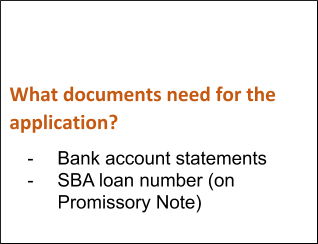 What is Form 1099-MISC?
What is Form 1099-MISC?
Form 1099-MISC is to report payments made in course of a trade or business to non-employee. Although the 1099–MISC is still in use, contractor payments made in 2020 and beyond will be reported on the new form 1099-NEC.
Form 1099-Misc and Instructions
- Rents (Box 1)
Enter amounts of $600 or more for all types of rents
- Other Income (Box 3)
Enter other income of $600 or more required to be reported on Form 1099-MISC that is not reportable in one of the other boxes on the for
- Gross Proceeds Paid to an Attorney (Box 10)
Enter gross proceeds of $600 or more paid to an attorney in connection with legal services (regardless of whether the services are performed for the payer)
- Fishing Boat Proceeds (Box 5)
Enter the individual’s share of all proceeds from the sale of a catch or the FMV of a distribution in kind to each crew member of fishing boats with normally fewer than 10 crew members. A fishing boat has normally fewer than 10 crew members if the average size of the operating crew was fewer than 10
- Medical Payments (Box 6)
Enter payments of $600 or more made in the course of your trade or business to each physician or other vendor or provider of medical or health care services. Include payments made by medical and health care insurers under health, accident, and sickness insurance programs. If payment is made to a corporation, list the corporation as the recipient rather than the individual providing the services. Payments to persons providing health care services often include charges for injections, drugs, dentures, and similar items. In these cases, the entire payment is subject to information reporting. You are not required to report payments to pharmacies for prescription drugs
- Direct Sales (Box 7)
Enter an “X” in the checkbox for sales by you of $5,000 or more of consumer products to a person on a buy-sell, deposit-commission, or other commission basis for resale (by the buyer or any other person) anywhere other than in a permanent retail establishment. Do not enter a dollar amount in this box. The report you must give to the recipient for these direct sales need not be made on the official form. It may be in the form of a letter showing this information along with commissions, prizes, awards, etc.
- Substitute Payments in lieu of dividends or interest (Box 8)
Enter aggregate payments of at least $10 of substitute payments received by a broker for a customer in lieu of dividends or tax-exempt interest as a result of a loan of a customer’s securities. Substitute payment means a payment in lieu of (a) a dividend, or (b) tax-exempt interest to the extent that interest (including original issue discount) has accrued while the securities were on loan. For this purpose, a customer includes an individual, trust, estate, partnership, association, company, or corporation.
- Crop Insurance Proceeds (Box 9)
Enter crop insurance proceeds of $600 or more paid to farmers by insurance companies unless the farmer has informed the insurance company that expenses have been capitalized under section 278, 263A, or 447 of Instructions for Forms 1099-MISC and 1099-NEC.
- Excess Golden Parachute (Box 13)
Enter any excess golden parachute payments. An excess parachute payment is the amount over the base amount (the average annual compensation for services includible in the individual’s gross income over the most recent 5 tax years). Find additional detail on page 11 of the Instructions for Forms 1099-MISC and 1099-NEC.
- Federal tax withheld (Box 4)
Enter backup withholding. For example, persons who have not furnished their TINs to you are subject to withholding on payments required to be reported in box 1. For more information on backup withholding, including the rate, see Instructions for Forms 1099-MISC and 1099-NEC

 Deadline: January 31, 2021
Deadline: January 31, 2021
 How often to reconcile bank statements?
How often to reconcile bank statements? 

